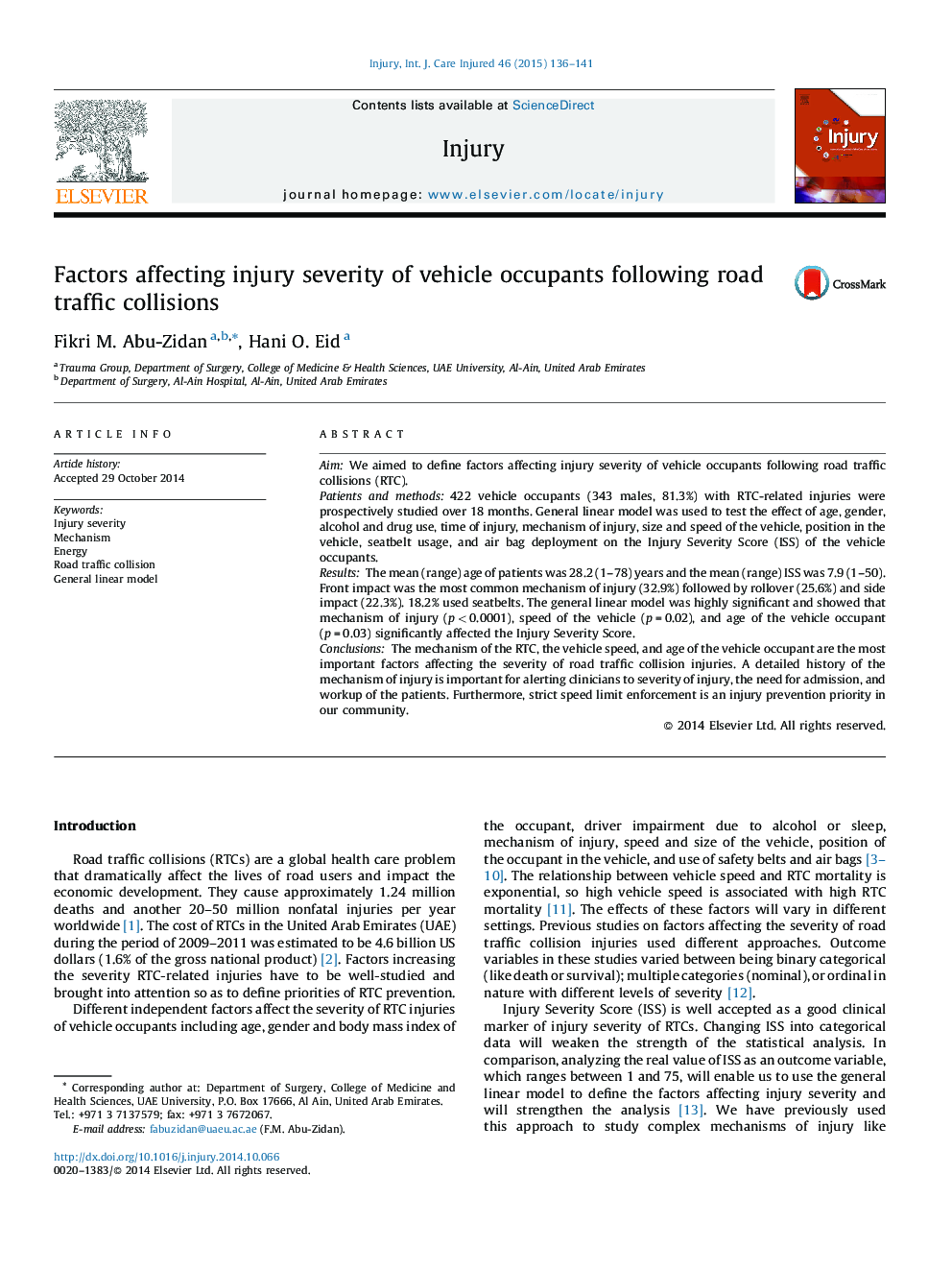| Article ID | Journal | Published Year | Pages | File Type |
|---|---|---|---|---|
| 3239185 | Injury | 2015 | 6 Pages |
AimWe aimed to define factors affecting injury severity of vehicle occupants following road traffic collisions (RTC).Patients and methods422 vehicle occupants (343 males, 81.3%) with RTC-related injuries were prospectively studied over 18 months. General linear model was used to test the effect of age, gender, alcohol and drug use, time of injury, mechanism of injury, size and speed of the vehicle, position in the vehicle, seatbelt usage, and air bag deployment on the Injury Severity Score (ISS) of the vehicle occupants.ResultsThe mean (range) age of patients was 28.2 (1–78) years and the mean (range) ISS was 7.9 (1–50). Front impact was the most common mechanism of injury (32.9%) followed by rollover (25.6%) and side impact (22.3%). 18.2% used seatbelts. The general linear model was highly significant and showed that mechanism of injury (p < 0.0001), speed of the vehicle (p = 0.02), and age of the vehicle occupant (p = 0.03) significantly affected the Injury Severity Score.ConclusionsThe mechanism of the RTC, the vehicle speed, and age of the vehicle occupant are the most important factors affecting the severity of road traffic collision injuries. A detailed history of the mechanism of injury is important for alerting clinicians to severity of injury, the need for admission, and workup of the patients. Furthermore, strict speed limit enforcement is an injury prevention priority in our community.
